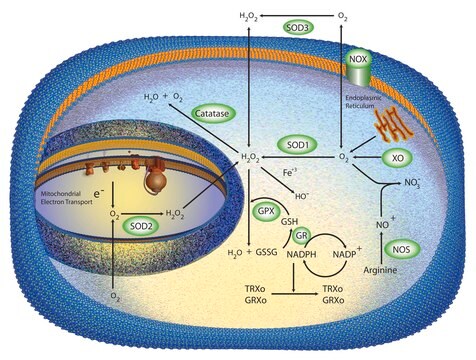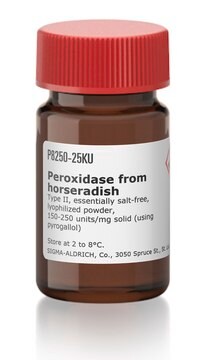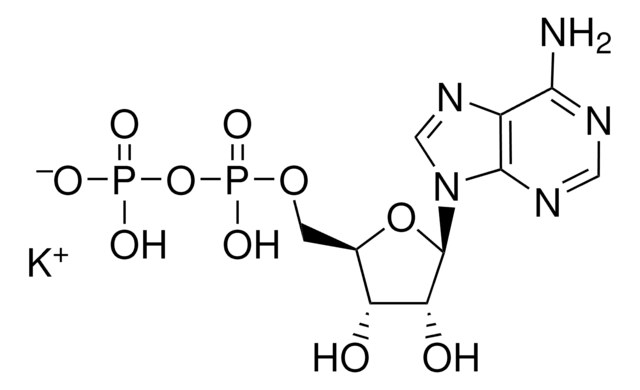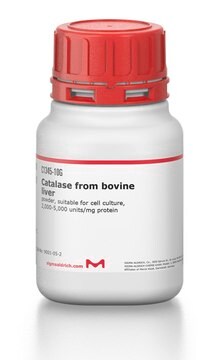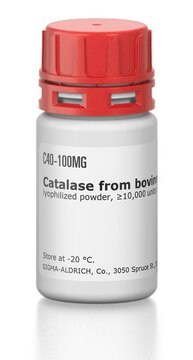S7446
Superoxide Dismutase from bovine erythrocytes
BioUltra, lyophilized powder, ≥4,500 units/mg protein, ≥97% (SDS-PAGE)
Synonym(s):
SOD, Superoxide: superoxide oxidoreductase
About This Item
Recommended Products
product line
BioUltra
Quality Level
Assay
≥97% (SDS-PAGE)
form
lyophilized powder
specific activity
≥4,500 units/mg protein
mol wt
32.5 kDa
composition
Protein, ≥95% biuret
relevant disease(s)
arthritis
storage temp.
−20°C
Looking for similar products? Visit Product Comparison Guide
Related Categories
General description
Application
Biochem/physiol Actions
Unit Definition
Storage Class Code
10 - Combustible liquids
WGK
WGK 3
Flash Point(F)
Not applicable
Flash Point(C)
Not applicable
Personal Protective Equipment
Certificates of Analysis (COA)
Search for Certificates of Analysis (COA) by entering the products Lot/Batch Number. Lot and Batch Numbers can be found on a product’s label following the words ‘Lot’ or ‘Batch’.
Already Own This Product?
Find documentation for the products that you have recently purchased in the Document Library.
Customers Also Viewed
Protocols
Enzymatic Assay of Superoxide Dismutase
Separation of Superoxide dismutase
Chromatograms
application for HPLCOur team of scientists has experience in all areas of research including Life Science, Material Science, Chemical Synthesis, Chromatography, Analytical and many others.
Contact Technical Service